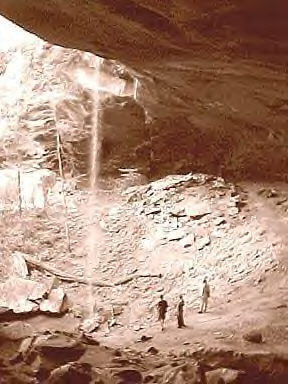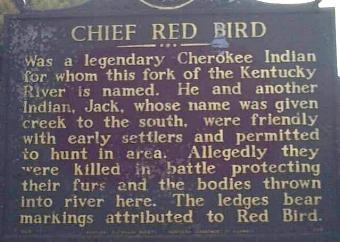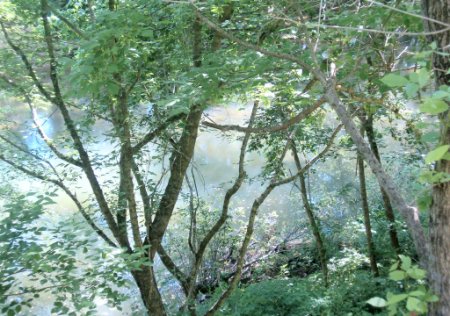"Aaron was preparing for trapping
season, and made a trip to Madison Co., KY, for supplies. It
is verified Aaron was in Madison Co. visiting his daughter Catherine
in late August 1811 from the McLemore family archives. He departed
Madison Co. sometime around the first of September for Pulaski
Co., KY, where he lived in a small one-room cabin located on
property belonging to George White. George had a huge family,
some people say possibly seventeen children. Many of them already
had married and some lived nearby, and in 1810 George still had
six children living with him in
the household.
"George White had a son named
Lambert who was born about the same time the family moved to
Kentucky from Louisa Co., VA, ca 1785. Lambert often lived with
Aaron, and helped him take care of furs. In the summer, Aaron
would help George with farm work for allowing him to live on
his land.
"Lambert was with Aaron when
he visited Madison Co. On the way home two brothers, Isaac and
Jacob Gregory attacked, and left them for dead after scalping
Aaron. The thieves stole everything Aaron possessed.
"Somehow Aaron and Lambert
made it back to Madison Co. where some passersby loaded them
in a wagon and took them to the home of Jacob White, a family
relative of George White, and a certified Medical Doctor. That
was on September 3, 1811, and on September 11, 1811, Aaron
died. He was buried in the White family cemetery the same
day. The Cemetery is located at Foxtown, Madison Co., KY.
"That evening eight men left
Madison Co. with one idea in mind, to hunt down and hang Jacob
and Isaac Gregory. Before departure, a letter was written to
the Attorney General of Kentucky James Blair, and Governor Charles
Scott, informing them of the action being taken, and it was signed
by eight men. On September 16, 1811, they wrote another letter
to Governor Scott and Attorney General James Blair, which informed
them of the precise location where Isaac and Jacob Gregory were
hung in a tree. The purpose of the letter was to allow relatives
to retrieve the bodies and bury them if their families so wanted.
Again eight men signed the letter.
"The men retrieved Aaron's
property, and delivered it to his daughter Catherine. Lambert
White survived the ordeal and walked with a slight limp for the
remainder of his life. He died sometime after 1840 in Pulaski
Co., KY, when he was listed on that US Census of 1840 for Pulaski
Co. as living alone and being between 50-60 years of age. His
full name was Lambert Jacob White, and they called him Jake."
|





